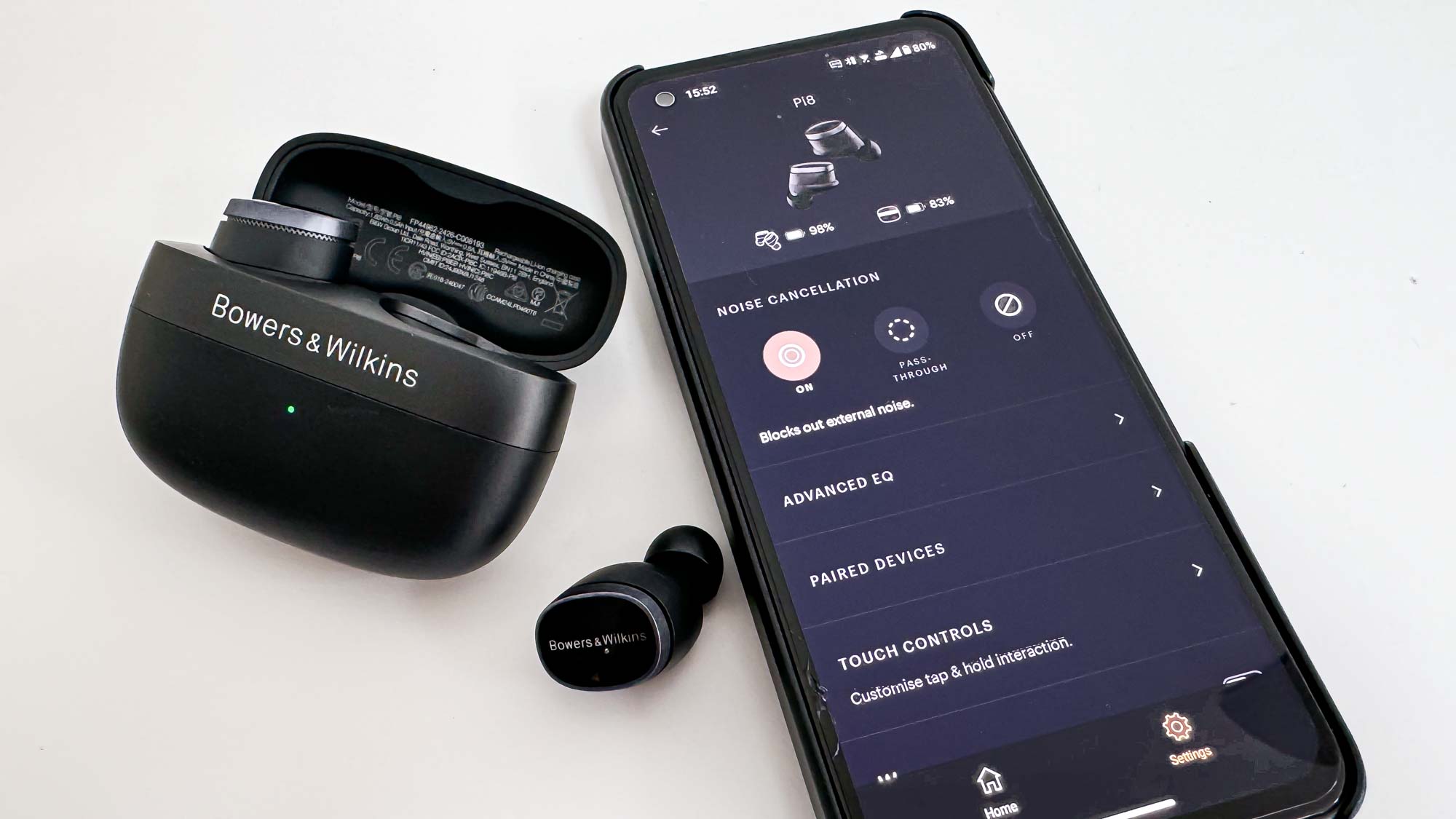Pixel 3 vs. iPhone XR: Battle of the Affordable Flagships
At $799, the Pixel 3 delivers some impressive features without breaking the bank. But can Apple's upcoming iPhone XR undercut it on price and value?
Editors’ Note: We’ve updated this story on Dec. 26 with photo comparisons between the Pixel 3 and iPhone XR.
Phone prices are climbing ever upward, with some flagships now commanding asking prices of $1,000 — or more, should you max out on storage. Thankfully, Google and Apple retain some measure of restraint with two of their recent models.
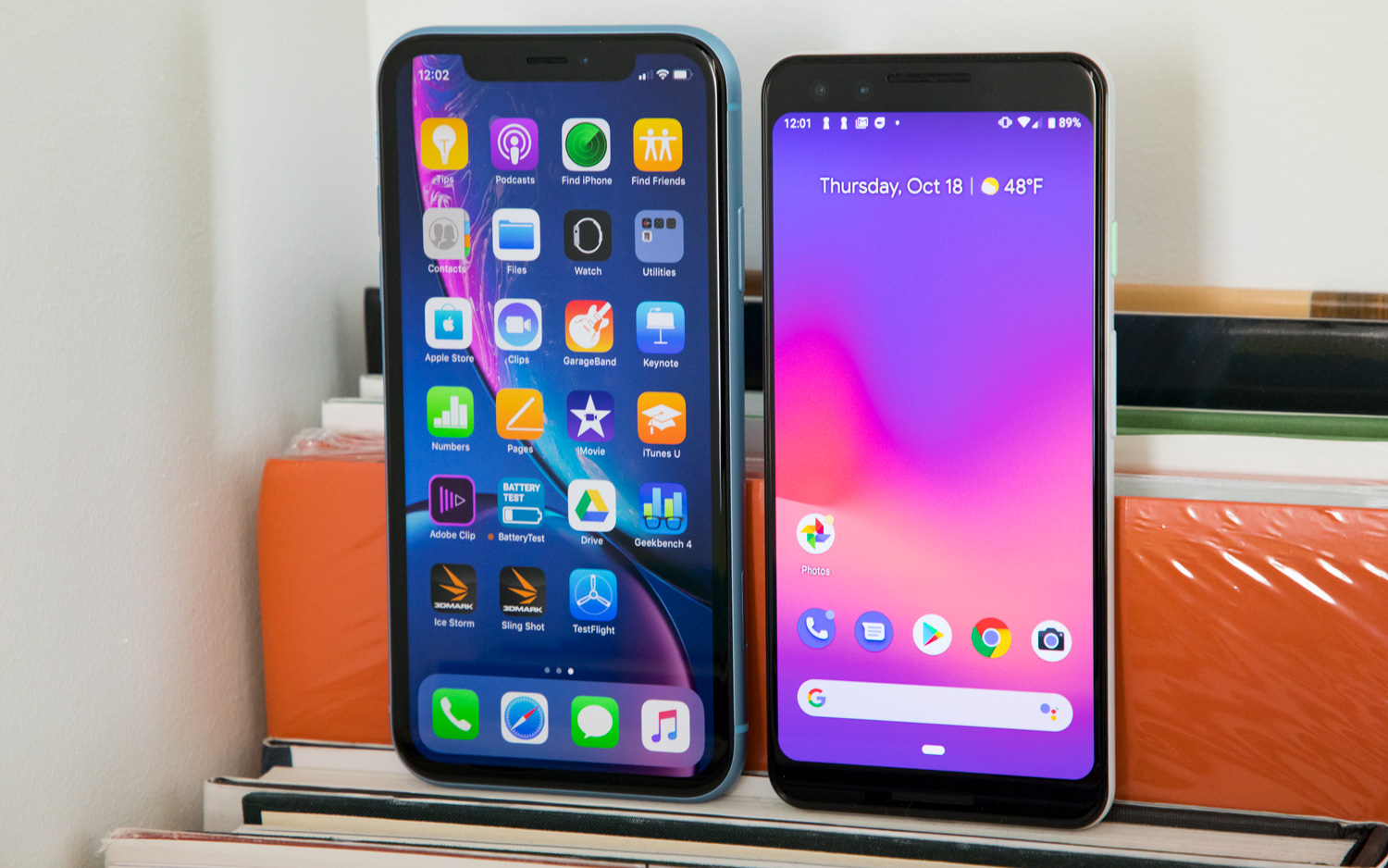
The new Pixel 3 may cost $150 more than Pixel 2, but Google’s newer phone still costs $799 — certainly not inexpensive, but not as costly as the other phones in its class.
Apple, not exactly known for offering discounts on its hardware, has a relatively-inexpensive-for-its-class device of its own in the $749 iPhone XR. This iPhone figures to invite comparisons to the Pixel 3 since both phones are in the same price range and rely on their cameras to provide standout features.
Which sub-$800 handset deserves your attention (and dollars)? Here's how the Pixel 3 and iPhone XR stack up.
Pixel 3 vs. iPhone XR: The Specs
| Pixel 3 | iPhone XR | |
| Price | $799, $899 | $749, $799, $899 |
| Screen Size (Resolution) | 5.5 inches (2160 x 1080) | 6.1 inches (1792 x 828) |
| Screen Type | OLED | LCD |
| CPU | Snapdragon 845 | A12 Bionic |
| RAM | 4GB | 3GB (based on regulatory filings) |
| Storage | 64GB, 128GB | 64GB, 128GB, 256GB |
| Rear Camera | 12.2-MP (f/1.8) | 12-MP (f/1.8) |
| Front Camera | 8-MP wide-angle (f/2.2); 8-MP telephoto (f/1.8) | 7-MP (f/2.2) |
| Battery | 2,915 mAh | 2,942 (based on regulatory filings) |
| Battery Life (Hrs: Mins) | 8:27 | 11:26 |
| Size | 5.7 x 2.7 x 0.3 inches | 5.9 x 3 x 0.3 inches |
| Weight | 5.3 ounces | 6.4 ounces |
| Colors | Clearly White, Just Black, Not Pink | White, Black, Blue, Yellow, Coral, Product Red |
Design
At first glance, the iPhone XR/Pixel 3 debate looks like the latest entry in the new game smartphone fans are playing: Notch or Not? The screens on the phones have similar aspect ratios — 19.5:9 on the XR, 18:9 on the Pixel 3 — but they achieve these elongated displays in different ways.

Apple gets more screen real estate out of the XR by including a notch at the top of the display; Google's Pixel 3 features a chunkier bezel. Which look you prefer depends on how you feel about notches.
Get instant access to breaking news, the hottest reviews, great deals and helpful tips.
That notch on the iPhone XR isn't just there to help Apple squeeze in more screen space. It also houses the TrueDepth front camera that enables Face ID for unlocking your iPhone and confirming mobile payments. The Pixel 3 has no such technology, instead relying on a fingerprint sensor on the back of the phone.
The iPhone XR offers more screen space at 6.1 inches to the Pixel 3's 5.5-inch display. But that allows the 5.7 x 2.7 x 0.3-inch Pixel to be more compact than the 5.9 x 3 x 0.3-inch iPhone XR. The Pixel 3 is lighter, too (5.3 ounces versus 6.4 ounces for the iPhone X).
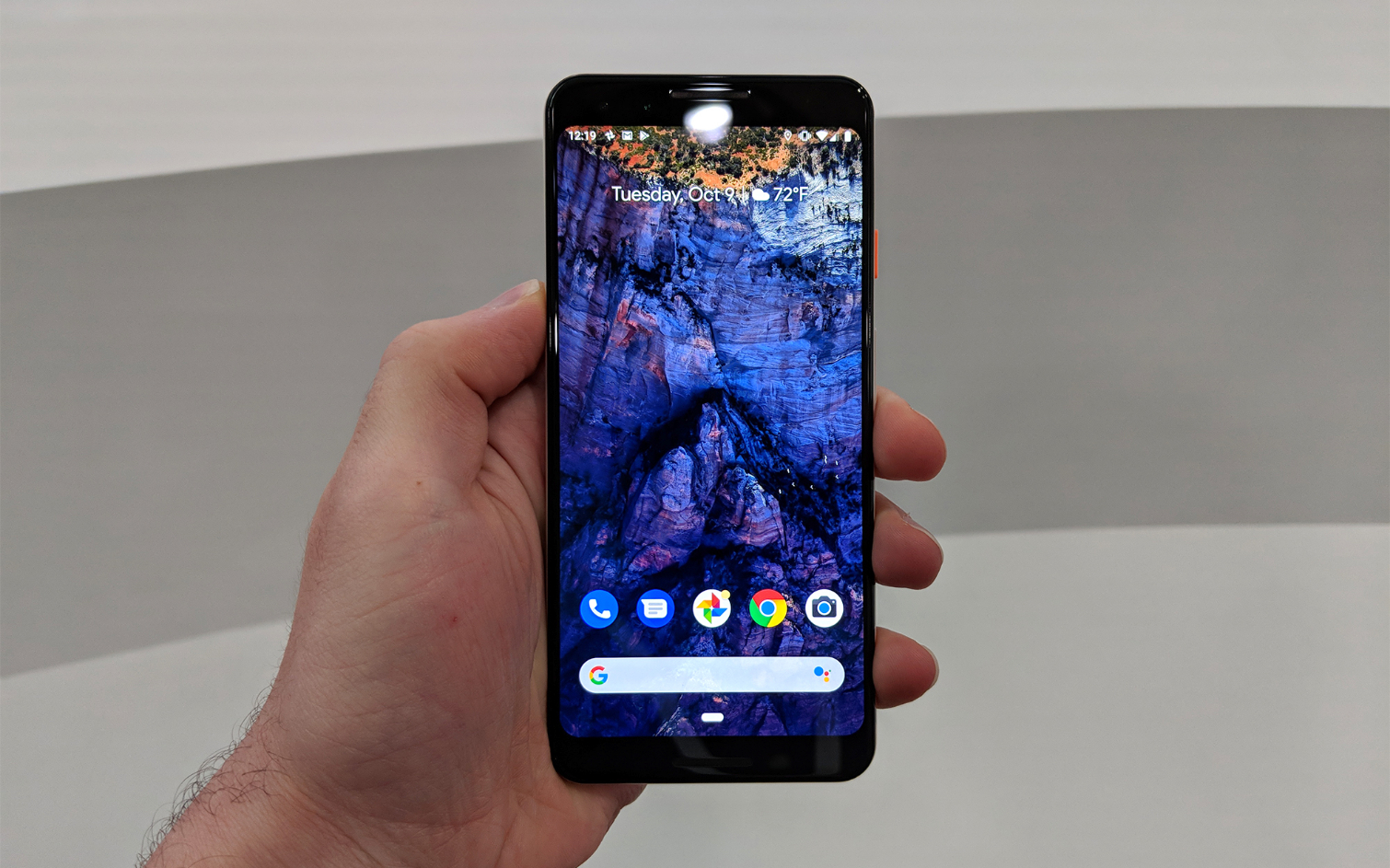
Both phones have glass backs, though Google deserves credit for using a two-tone design that blends matte and glossy textures. We found in our hands-on time with the Pixel 3 that it doesn't pick up fingerprint smudges as easily as some other phones. You also won’t find a 3.5mm headphone jack on either device
MORE: 9 Reasons the Pixel 3 Beats the iPhone XS
There's a lot more color on the iPhone side of the aisle. The Pixel 3 comes in the traditional Clearly White and Just Black options, along with a newcomer, Not Pink. By comparison, Apple offers a veritable rainbow of choices with the XR — black, blue, white, coral, yellow and a Product Red version.
Winner: iPhone XR
Display
The biggest difference between these two phones is their screens.. While Apple opted for a 6.1-inch LCD panel on the iPhone XR, probably as a cost-saving move, Google's Pixel 3 phone uses a 5.5-inch OLED screen. That means richer colors and truer blacks on the Pixel 3, though LCD-based phones tend to have brighter screens.
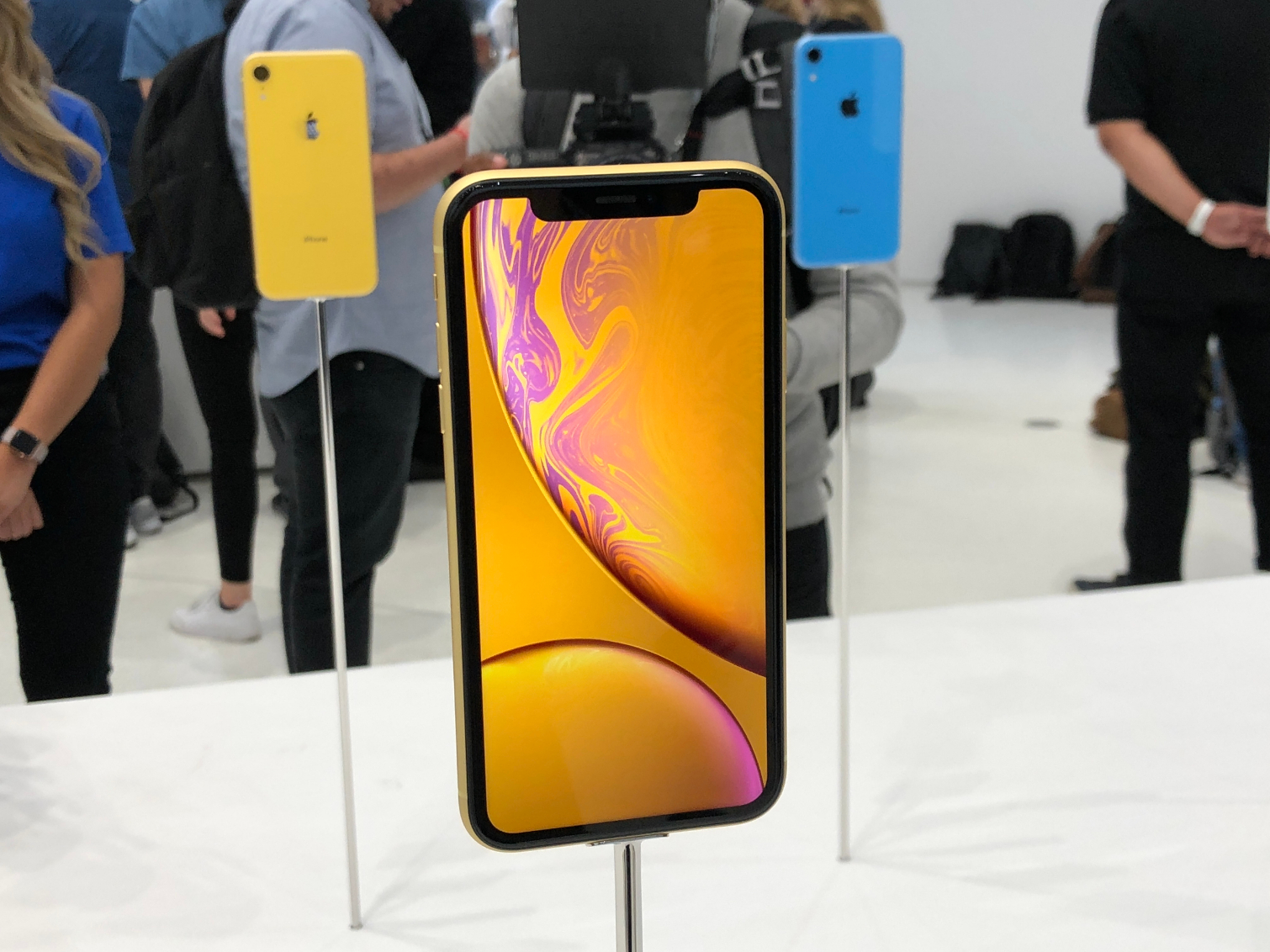
And that’s something we saw in our testing. The iPhone XR registered 589 nits of brightness on a light meter — an excellent result that was well ahead of the Pixel 3’s 401 nits. Colors are more robust on the Pixel 3, though. It reproduced 202 percent of the sRGB color spectrum to the iPhone XR’s 123.4. The iPhone XR shows off more accurate colors, with a Delta-E rating of 0.28 compared to 0.44 for the Pixel 3. (Numbers closer to 0 are better.)
MORE: 6 Reasons You Should Skip the iPhone XS for iPhone XR
Despite sharper resolution on the Pixel 3 — 2160 x 1080, compared with 1792 x 828 on Apple's handset — and the truer blacks, we think the XR’s brighter screen and true-to-life colors give it the slightest of edges in this battle of displays.
Cameras
The biggest battle between the latest phones from Apple and Google comes down to cameras. And the Pixel 3 comes into this battle boasting some serious bona fides when it comes to photography.
Google’s latest phone puts the emphasis on artificial intelligence aiding its single lens, with features like Top Shot in which the Pixel 3 will be able to recommend the best possible photo taken from all the exposures captured by the camera. (Think of it as a way to avoid taking a photo, only to find out that someone was blinking the moment you pressed the shutter.) Super Res Zoom using computation photography in lieu of an optical zoom to reframe an image as a close-up, sharpening details for a crisper shot. And the Pixel 3 now offers Night Sight, an impressive capability that produces better images in low light.
The iPhone XR has a single rear camera, too, a departure from the dual-lens setups on the iPhone XS and XS Max. That means no 2x optical zoom, but other features that impressed us when we tested the iPhone XS and XS Max are here, including Smart HDR. That feature captures multiple exposures and stitches them together with the result being photos that can capture details in shadows and show off brightly lit objects. You're also able to adjust the depth of focus on a portrait shot on an iPhone XR even after you've taken a photo, thanks to the phone's computational processing skills.
Pitting the Pixel 3 and iPhone XR against each other, there’s not separating the cameras on those two phones. Take this array of multi-colored cupcakes, in which the Pixel and iPhone produce nearly identical shots. The colors are a little brighter in the iPhone XR’s shot, but it also has the more jarring lighting. The shot captured by the Pixel 3 feels a little better balanced, with sharper contrast; the colors on the icing look a little more true-to-life as well.
If the cupcake comparison seemed too close to call, consider these dueling shots of a dimly lit restaurant. Again, at first glance, there’s little to distinguish the Pixel and iPhone photos. But in an effort to light up the scene, the iPhone XR’s camera loses a little bit of focus around the details — the tiled ceiling around the lights become a little less distinct. The colors appear more muted in the iPhone XR’s shot, too. The shot produced by the Pixel 3 is warmer and more consistent, and that’s without calling upon the Night Sight feature to do the heavy lifting of calling out details in low lighting.
Portrait photos are just as competitive between the two cameras. The Pixel 3 does a great job with the skin tone on my colleague Caitlin, even if one of her eyes gets a little lost in shadow. Reasonable people can disagree on how the two phones handle backgrounds, though I prefer that the iPhone XR provides a wider shot that better establishes where this photo was caputred. One thing you can’t dispute is how the two phones handle the artistic blur. The Pixel 3 leaves too many artifacts around Caitlin’s hair, while the iPhone XR does a solid job distinguishing between her and the background.
Up front, the Pixel 3 offers two cameras to the iPhone XR's single shooter. The second lens on the Pixel lets Google's phone take wide-angle self-portraits, which should mean squeezing more people or background scenery into the shot.
The Pixel 3 easily bests the iPhone XR when it comes to selfies. The self-portrait my colleague Adam took with with Google’s phone is warmer with better colors; there’s too much of a shadow over half his face in the iPhone XR’s shot. Still, give the iPhone XR credit for handling the backlighting from nearby windows a little better than the Pixel 3 did. There’s some bright white blotches where the windows should be in the Pixel’s photo, marring what’s otherwise the superior selfie.
Winner: Pixel 3
Performance
Like the iPhone XS and XS Max, the iPhone XR runs on a new A12 Bionic processor designed by Apple. That 7-nanometer chip produces some of the fastest scores we've seen on synthetic benchmarks like Geekbench 4, and it also improved upon the already blazing-fast times of the A11-powered iPhone X in our video-transcoding test. More important, A12-powered iPhones have outperformed Android devices running on the Snapdragon 845 mobile processor in our testing. And the Snapdragon 845 just happens to be what's inside the new Pixel 3.
MORE: Best Smartphones on the Market Now
The same scenario we’ve seen with other A12-vs.-Snapdragon 845 showdowns played out here. The iPhone XR scored an 11,312 on the Geekbench 4 benchmark for overall performance, well ahead of the Pixel 3’s 7,316 score. In fact, the most notable thing about the Pixel 3’s result was not how it compared to the iPhone XR, but how it trailed other Snapdragon 845-powered Android devices that pack in more RAM.

The iPhone XR finished on top in our real world test, too, taking just 40 seconds to convert a 4K video clip to 1080p. The Pixel 3 needs 2 minutes, 53 seconds to get the job done.
Things are a little bit more evenly matched when it comes to graphics. On 3DMark’s Slingshot Extreme Unlimited test, the iPhone XR scored a 4,416 to the Pixel 3’s 4,400.
You’re going to get solid performance in most everyday tasks from either phone. But on the whole, Apple’s iPhones are a bit faster than the best Android devices, and that pattern certainly holds true here.
Winner: iPhone XR
Software
It's the old Android-versus-iOS debate. And while that can often come down to which mobile OS you prefer, Google is tilting the debate in its favor with the AI-powered features baked into the Pixel 3.
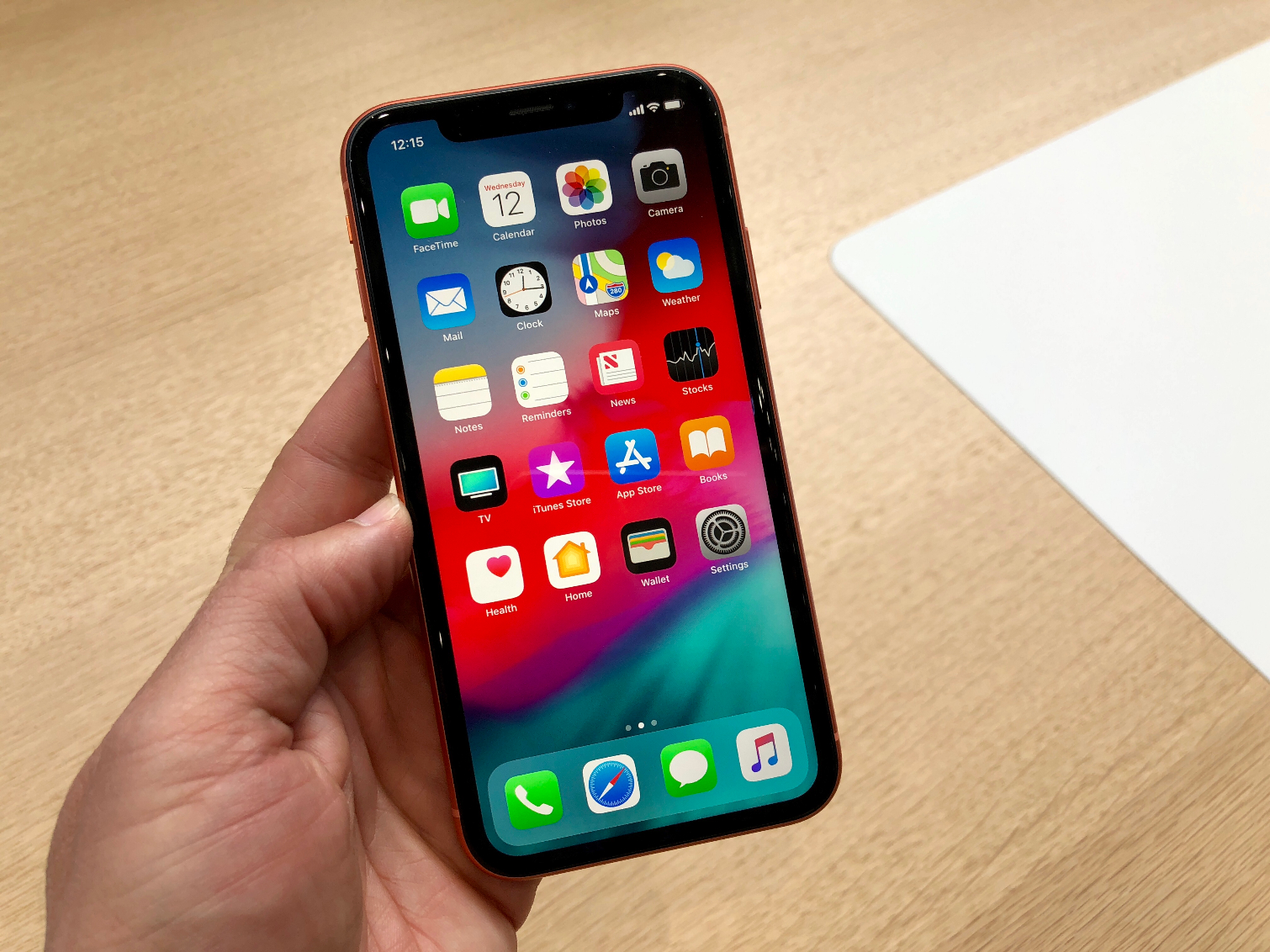
On Google's new phone, the Google Assistant can screen incoming calls, providing a real-time transcript right there on your phone's display so you can see if it's a call you actually want to take or just another pitch from a telemarketer. Google is also rolling out Duplex support in different cities, which will enable the Google Assistant on the Pixel 3 to book appointments and make reservations on your behalf over the phone.

With Android 9 Pie included on the Pixel 3, Google's latest phone offers new Digital Wellbeing tools that monitor your device usage, letting you impose time limits and even silence your phone when you place your Pixel screen-down. Several of those capabilities match what iOS 12 offers in its new Screen Time feature, and the iPhone XR ships with iOS 12 preinstalled.
MORE: Best Android Camera Apps - Take Better Pictures on Your Phone
That means you'll get iOS 12's other enhancements when you get an iPhone XR, including the ability to turn yourself into a Memoji using your phone's TrueDepth camera. iOS 12 introduces a Siri Shortcuts feature, too, that lets you build customized shortcuts with multiple apps via the iPhone's digital assistant.
Winner: Pixel 3
Battery
Apple doesn't really trumpet the size of the batteries inside its phones — according to regulatory filings, the iPhone XR has a 2,942 mAh power pack — but it promised longer battery life for its new phone. And it delivered in our battery test, where the iPhone XR surfed the web continuously over T-Mobile’s LTE network for 11 hours, 26 minutes before running out power. That’s an impressive result that puts the iPhone XR among the longest-lasting phones we tested.
The Pixel 3 has a 2,915 mAh battery, slightly larger than the one inside last year's Pixel 2. That didn't necessarily translate to great battery life, as the Pixel 3 lasted just 8 hours, 27 minutes on our test. Not only is that behind the iPhone XR by around 3 hours, it’s also 90 minutes shy of the average result for smartphones. In everyday usage, we noticed that the Pixel 3 lasts a decent enough time on the charge, though the iPhone XR clearly lasts longer.
Both the iPhone XR and the Pixel 3 can charge wirelessly, and both support fast-charging. The Pixel 3 includes a fast charger out of the box, though. With the iPhone XR, you have to buy one separately.
Winner: iPhone XR
Price and Availability
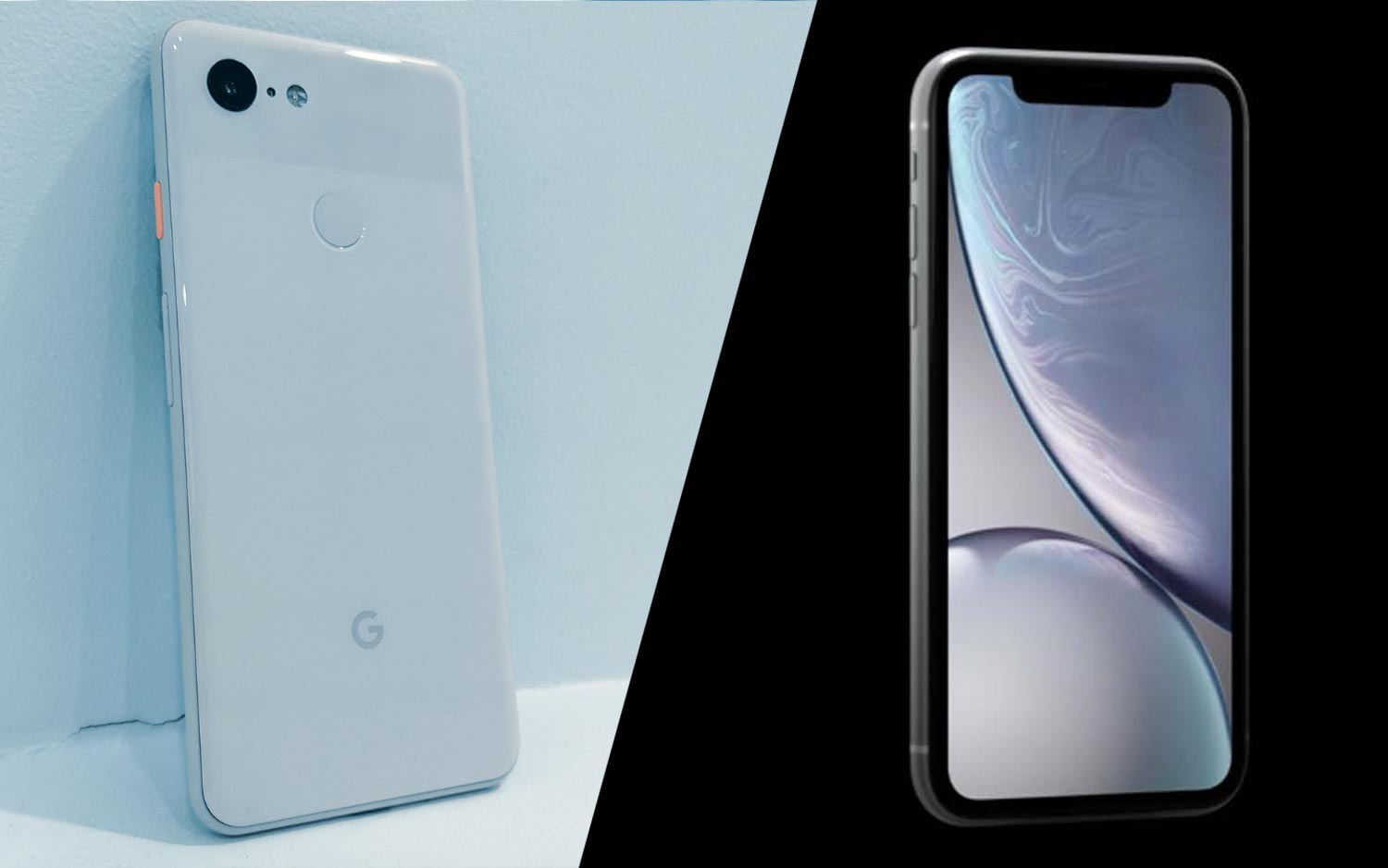
As noted at the outset, the iPhone XR costs $50 less than the Pixel 3. And the difference in value becomes even more apparent as you increase capacity beyond the 64GB that comes in the base model of each phone.
Upping the storage on the iPhone XR to 128GB raises the price to the same $799 you'll pay for a 64GB Pixel 3. If you want 128GB of storage on your Pixel, you'll need to kick in another $100. That same $899 gets you a 256GB iPhone XR.
You can a Pixel 3 from either Google or Verizon. (Best Buy is selling the phone, too, but it's the Verizon-tied version of the Pixel 3.) Apple's new iPhone is available from all major carriers, and Apple has been offering aggressive deals iPhone XR deals to convince people to buy its new phone (reportedly because the iPhone XR may not be selling as well as hoped, but why look a gift horse in the mouth?).
The Pixel used to be one of the few phones that worked with Google Fi, the company's wireless service. But in November, Google opened up Google Fi to all phones, including the iPhone XR. The Pixel 3 is still optimized for Google’s wireless service, but it doesn’t enjoy the edge that it used to.
Winner: iPhone XR
Outlook
| Phone | Pixel 3 | iPhone XR |
| Design (10 points) | 8 | 9 |
| Display (20 points) | 16 | 17 |
| Cameras (20 points) | 18 | 16 |
| Performance (20 points) | 17 | 19 |
| Software(10 points) | 8 | 7 |
| Battery (10 points) | 6 | 8 |
| Price/Availability (10 points | 8 | 9 |
| Total (100 points) | 81 | 85 |
Not only can you save a little money with the iPhone XR, you also get a better phone. Apple’s $749 phone enough things better than the Pixel 3 to really stand out from Google’s handset. In particular, the better battery life, faster performance and distinctive design make Apple’s phone the better choice.
The Pixel 3 has its strengths. It takes better photos than the iPhone XR does, and its enhanced software features like Call Screen make it a compelling alternative. If you want the very best photos a phone can capture, the Pixel 3 is worth getting. But the iPhone XR strikes a better balance between value and features.
Credit: Tom's Guide
Philip Michaels is a Managing Editor at Tom's Guide. He's been covering personal technology since 1999 and was in the building when Steve Jobs showed off the iPhone for the first time. He's been evaluating smartphones since that first iPhone debuted in 2007, and he's been following phone carriers and smartphone plans since 2015. He has strong opinions about Apple, the Oakland Athletics, old movies and proper butchery techniques. Follow him at @PhilipMichaels.
-
PhilipMichaels Archived comments are found here: http://www.tomsguide.com/forum/id-3802947/pixel-iphone-battle-affordable-flagships.htmlReply -
test96852 pixel 3 looks so dated compared to modern smartphones. If google truly wants to revolutionize mobile devices, shouldn't their products reflect their intentions?Reply



